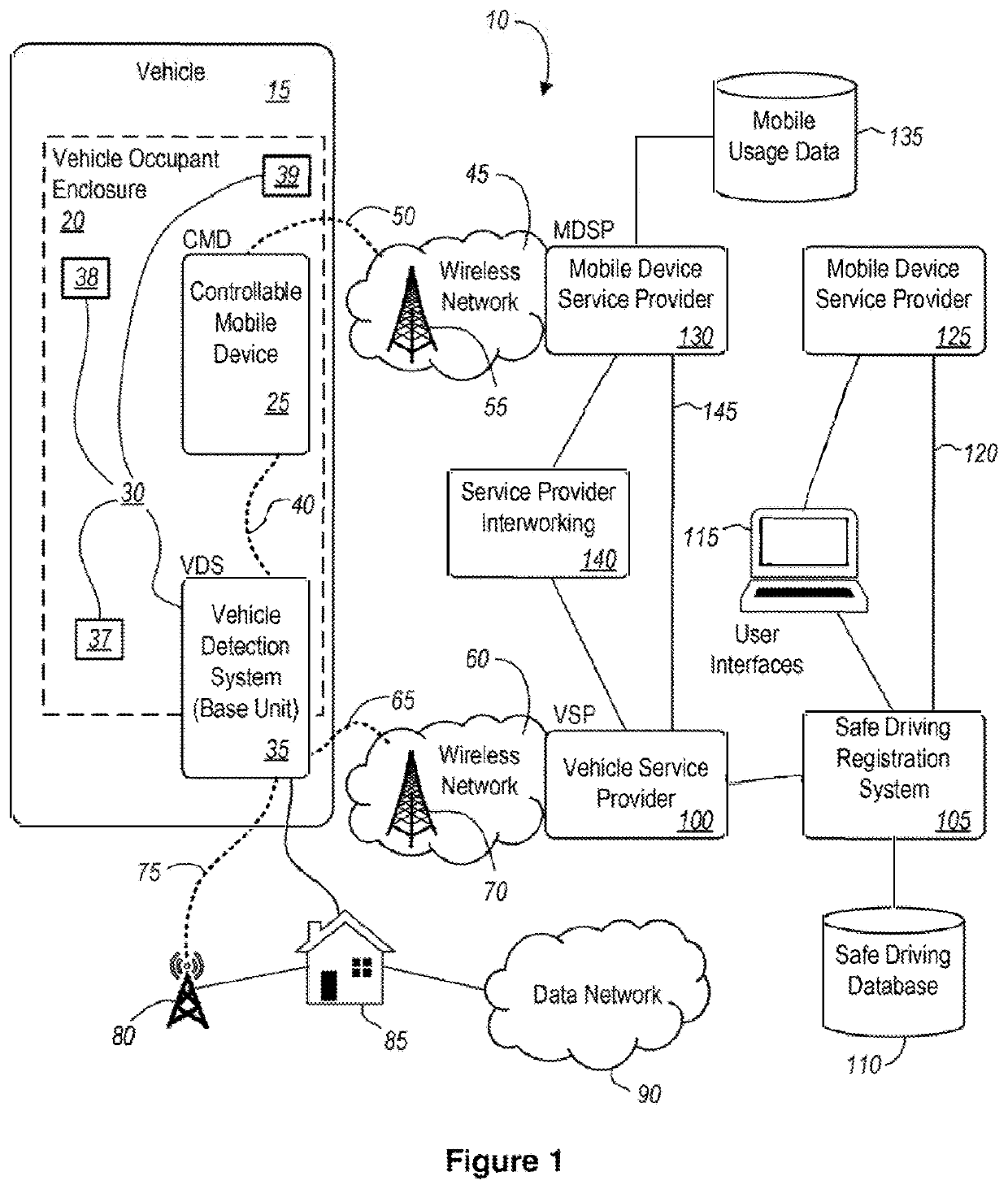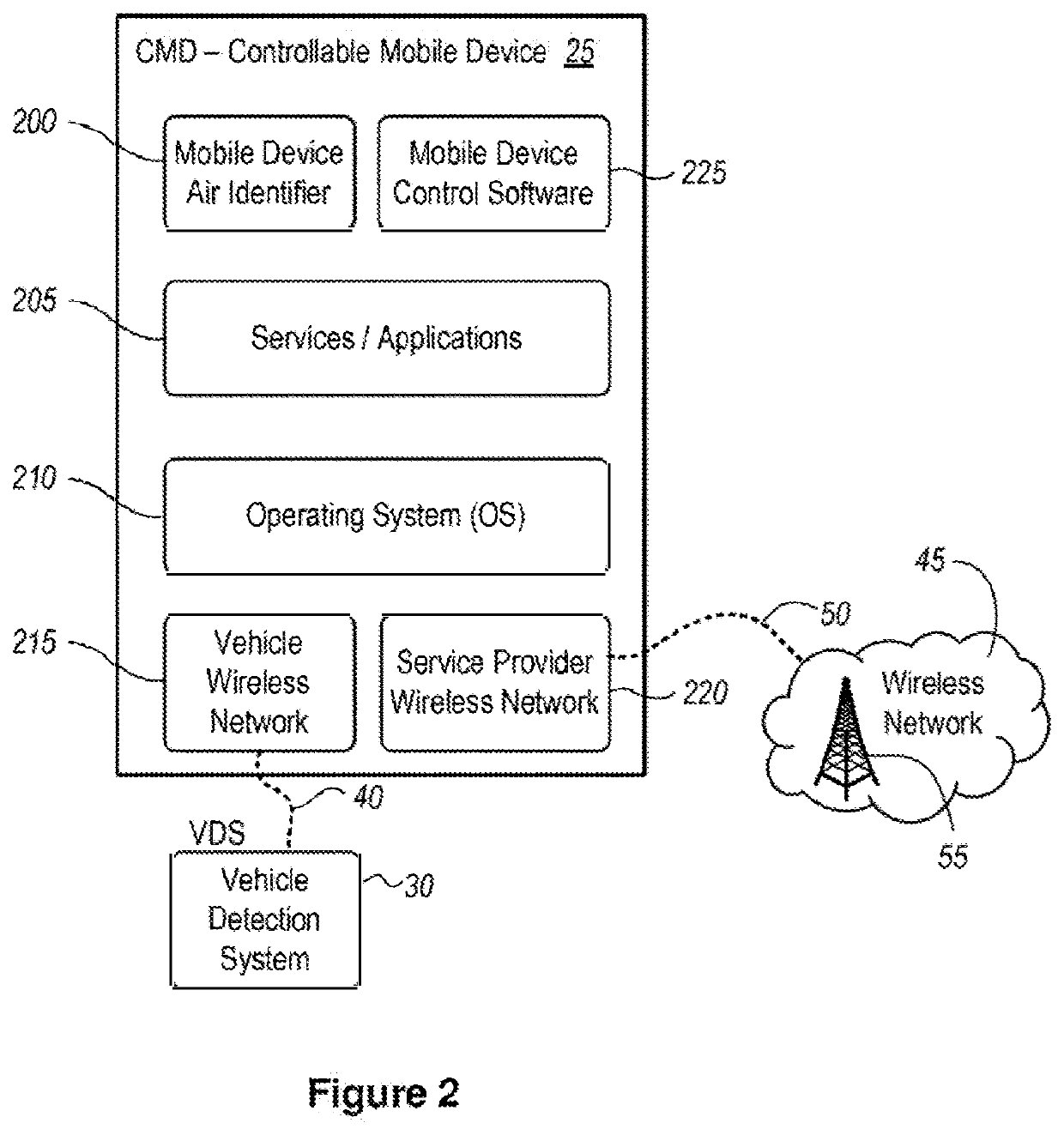Method and system for detecting, monitoring, and controlling a mobile communication device
a mobile communication device and mobile communication technology, applied in the direction of diagnostic recording/measuring, navigation instruments, instruments, etc., can solve problems such as unsafe operation of vehicles, achieve the effects of enhancing system functionality, eliminating ambiguity, and improving insurance company performan
- Summary
- Abstract
- Description
- Claims
- Application Information
AI Technical Summary
Benefits of technology
Problems solved by technology
Method used
Image
Examples
example 1
[0487]Example 1 illustrates an experiment in which probabilities are used to include a CMD in a vehicle at a SOT. In this Example 1, the SDRS system running on a hosted platform evaluates inputs from all CMDs and VDSs to determine probability that a CMD is in a vehicle at a SOT. Calculations were performed with one or more computation equipment described herein. The following Equations 1 and 2 were used in the calculations.
Total Inclusion / Exclusion of CMD in vehicle likelihood=(p(n−1)+(p(n)−(p(n−1)*p(n))) Equation 1
[0488]In Equation 1, n is a filter weight in range from 0 to 1.
TotalInclusionLikelihood=InclusionLikelihood−ExclusionLikelihood Equation 2.
[0489]In this Example 1, it was started inclusion and exclusion each at 0.0 as there were no preexisting factors that would make any driver a more likely candidate than another. Next it was determined which filters have returned LIKELY_INCLUDED through their use of various sensors and comparison techniques outlined throughout this d...
example 2
[0493]Example 2 illustrates an experiment in which probabilities are used to exclude a CMD in a vehicle at a SOT. In this Example 2, the system was utilized to determine probability that a CMD was not in a vehicle. Calculations were performed with computation equipment described herein. Inputs received included inputs from SDRS system running on a hosted platform evaluates inputs from all CMDs and VDSs. Equations 1 and 2 were used in this Example.
[0494]It was determined which filters have returned LIKELY_EXCLUDED through their use of various sensors and comparison techniques outline throughout this document. One filter returned LIKELY_EXCLUDED: ADJACENT_DISTANCE as the vehicle and CMD were a large distance away
[0495]The system retrieved the filter weight of each filter from a configuration as follows: ADJACENT_DISTANCE (weight=0.3). The following equations were applied in order to determine exclusion probability:
(1)=weight1
p(1)=0.3
[0496]Determined exclusion likelihood as 0.3
[0497]Ne...
PUM
 Login to View More
Login to View More Abstract
Description
Claims
Application Information
 Login to View More
Login to View More - R&D
- Intellectual Property
- Life Sciences
- Materials
- Tech Scout
- Unparalleled Data Quality
- Higher Quality Content
- 60% Fewer Hallucinations
Browse by: Latest US Patents, China's latest patents, Technical Efficacy Thesaurus, Application Domain, Technology Topic, Popular Technical Reports.
© 2025 PatSnap. All rights reserved.Legal|Privacy policy|Modern Slavery Act Transparency Statement|Sitemap|About US| Contact US: help@patsnap.com



